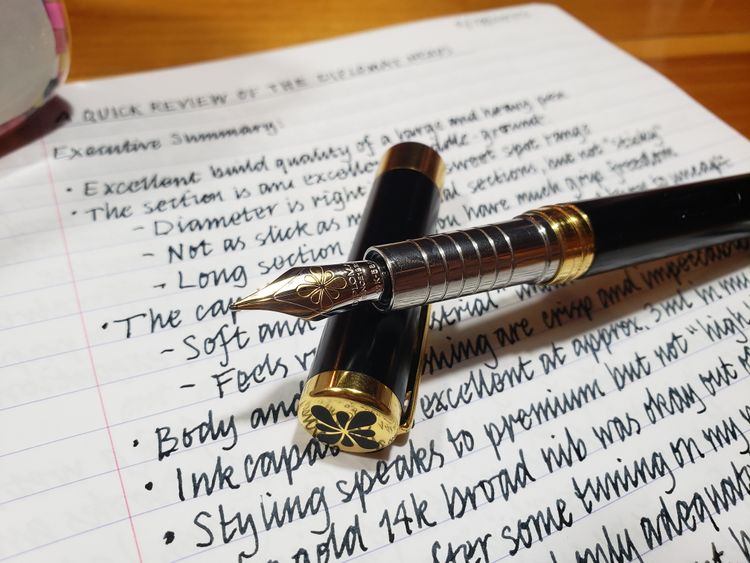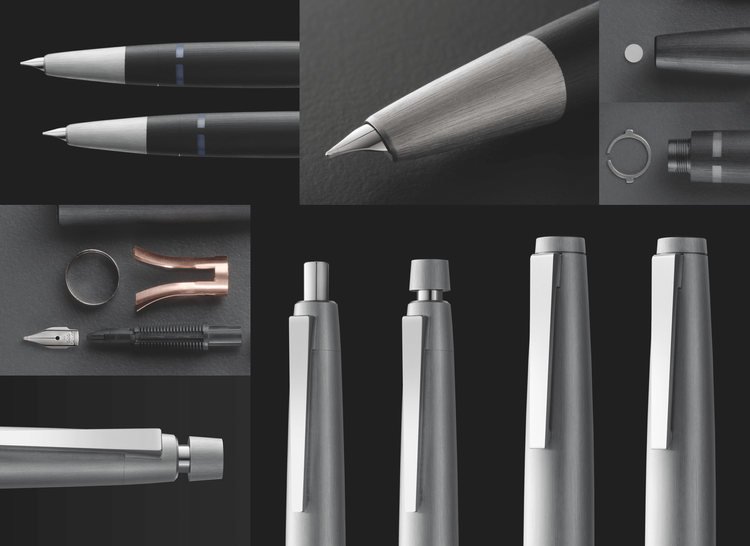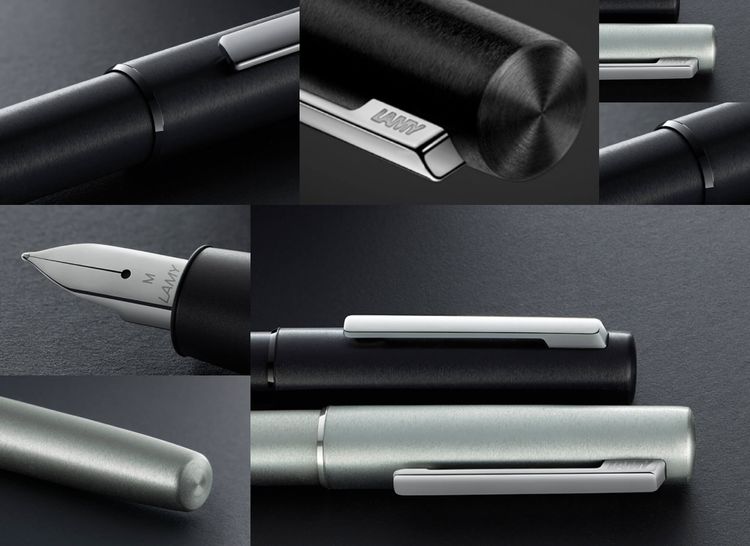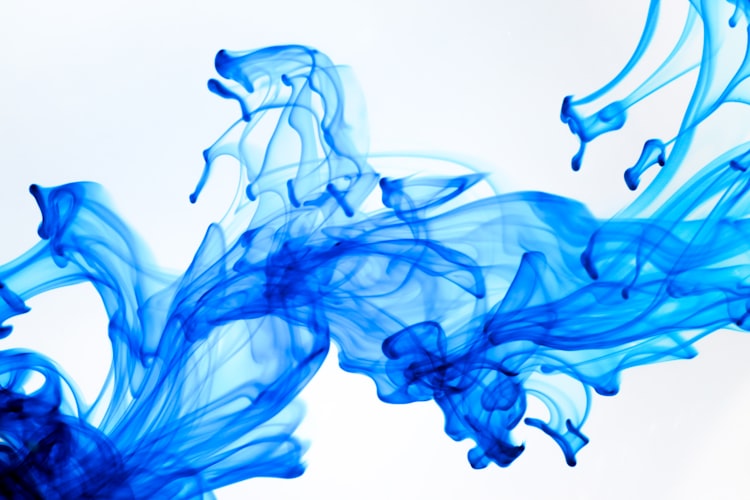In praise of Iron Gall inks for Fountain Pens

I'm a fan of permanent, archival inks. I like the idea that my work will have a degree of resilience. Within that category, there are three major types of permanent inks that you can go with right now that are fountain pen friendly:
- Pigmented
- Iron gall
- Cellulose-reactive (Noodler's Bulletproof inks)
When it comes to a test of sheer, raw power of permanence on the page, pigmented and bulletproof inks have a clear advantage over iron gall. Pigmented and bulletproof inks have a tendency to resist UV light to a high degree, and they are highly resistant to chemical or mechanical erasure. They are also often less acidic (such as the Ph neutral Noodler's inks) and thus, avoid the traditional cause of aging in iron gall inks of the traditional kind wherein the acidic reaction of the ink on the pulp-based paper would consume the paper over long periods of time (centuries).
Modern iron gall inks might be considered slightly less permanent and slightly more acidic than their pigmented and C.R. counterparts. This might then suggest that we can do away with the traditional formulations and use this newer technology. And, well, in some sense, we might be right in concluding this. Based on a limited set of criteria, the pigmented and C.R. inks have a clear advantage.
Nonetheless, when taken as a whole, the iron gall inks have a number of redeeming qualities that lend themselves to a modern user that the pigmented and C.R. inks simply don't compete with, and when taken as a whole, iron gall inks are not just a good option, but are consistently reaching the top of the stack for me. I find that the combination of holistic features of iron gall inks are sufficiently compelling that most of my writing these days is done in iron gall. That might change in the future, but for now, that's where I'm at.
Firstly, let's consider the permanence question. Iron gall inks are much more carefully formulated now than they used to be. Just because iron gall inks are slightly less permanent along some dimensions, in terms of archival longevity, we have every reason to believe that modern Iron Gall inks will stand the test of time for a very long time. Modern Iron Galls such as Platinum Blue Black have been tested for many decades without showing any significant fading or loss of even the dye-based coloring, much less the iron gall content, with no signs of paper damage. Given that iron gall inks today are much less aggressive than in past ages, and our means of preservation are significantly improved, as well as the quality of archival paper, it's reasonable to be able to expect many centuries of longevity from modern iron gall inks when combined with the appropriate papers and reasonable storage considerations (which needs to be considered for any of the inks, since destruction of the paper is a serious concern regardless of how well the ink stays on the page). Thus, it's really just in the extremes that we need to care. Iron gall hasn't demonstrated it's ability to span millennia as well as carbon black ink has, but it's no slouch. Cellulose reactive inks are still new kids on the block, and while there is no reason to believe that they won't stand up, they certainly don't have the track record of iron galls (both in terms of what happens when they go bad, nor what happens when cared for). For the vast majority of users, even a century of longevity is more than enough.
Secondly, because of the less aggressive formulations, iron gall inks are very friendly to fountain pens nowadays, and modern fountain pen construction materials are more resistant than ever to corrosive inks. This combination means that a good fountain pen with a good iron gall are going to be perfectly fine, and you won't risk destroying your pen. In this regard, the three types of permanent ink are on a relatively level playing field nowadays.
Thirdly, when compared to pigmented inks, iron gall inks are simply easier to maintain. Pigmented inks have a tendency to stain and stick to the insides of pen parts to a much greater degree than modern iron galls. This means that one needs to be more diligent when cleaning out pigmented inks and maintaining a regular rinse cycle for those pens compared to iron gall inks. Some pens like the Platinum line with their Slip-n-Seal technology helps to mitigate this because they keep a very good seal on the pen, and avoids the issues of pigmented ink drying out on the feed. Nonetheless, it cannot be argued that pigmented inks are simply higher maintenance. Compared to the cellulose reactive inks, I find that the higher dye-content in the C.R. inks tends to make them equally maintenance intensive to iron galls, and in the case of some colors, moreso. With inks like the Platinum Blue Black or Classic Inks series, I find that the modern iron galls are among the easiest of the permanent inks to maintain in a pen. As long as I have a pen where I'm not worried about corrosion of the internal or plated parts, I find iron gall inks the easiest to maintain out of the three. This significantly improves the "quality of life" when working with the pen.
And now we start to get into some of the lesser talked about features. The above three points can be summed up as, "iron gall inks are easier to use and plenty permanent." But that's not the whole story. We also need to consider the "experience" of using the ink, in terms of behavior on the paper, behavior while writing, and color.
Pigmented ink tends to stay on the top of the page, and cellulose reactive inks require that they can absorb into the paper to retain their permanence. Ink that remains on top of the page with CR inks will often smudge or refuse to dry over time. Pigmented inks can also result in excessive pigment rubbing off the page over time, in the same way that a pencil might smudge over time. This does not affect the permanence of either ink on the page, but it can be inconvenient when working with the pages.
Furthermore, both pigmented and cellulose-reactive inks tend to be more penetrating than iron gall ink. In other words, they are often much more prone to feathering than other inks. This is particularly true of cellulose reactive inks, where the Noodler's Bulletproof line of inks is often very likely to spread or bleed through the page more than other inks. Pigmented inks tend not to spread quite as much as the CR inks, but they still might bleed through more. This means that using these inks on anything but the best papers will generally lead to sub-optimal results.
On the other hand, the iron gall inks that I've used have been universally, exceptionally well behaved. In fact, they have been the best behaved inks on paper among all the inks that I have tried. I can lay down a lot of ink on pages, and I simply don't see bleed through, feathering, or spread like I do with other inks. In fact, there isn't even that much ghosting compared to other inks either. Overall, the way that, say, Platinum's iron gall inks work is better on the page than most other inks I have tried. This is in contrast to the CR and pigmented inks which both can be less well behaved on the page relative to some of the more "safe" dye-based inks.
This makes iron gall inks some of the most broadly usable inks for a wide range of tasks. I can use my iron gall inks on a wide array of papers and be confident in getting good results, which I cannot say for the other types of ink.
Then there's the way that the ink interacts with the nib. Some people complain that iron gall inks are too dry for them. But that doesn't tell the whole story. What you get in exchange for that dryer than normal behavior is an exceptionally controlled line and ink flow. This means that I can use my iron gall inks in a much wider array of different types of nibs and retain maximum control over the ink on the page. This is definitely not the case with pigmented or cellulose reactive inks. With iron gall inks, I can lay down the thinnest lines and the truest lines for each nib that I use. It let's me use a stub nib with the widest array of its line variation, and with the most consistency in applying that line variation, as well as flex nibs and ultra-extra fine nibs with the maximum capacity that those nibs are capable of delivering.
In contrast, pigmented ink can be a little more free flowing, which might have a nice feel for some people, but reduces your overall control, and prevents the extremely fine, careful precision that I can obtain with the iron gall inks. Moreover, the cellulose reactive inks are the worst of the lot in this respect, because they are so wet by their nature. While this means that if you aren't using calligraphy style nibs or nibs with a lot of character, that you'll have a smooth, clean writing experience, but it also means that you won't have nearly the definition. The CR inks often have the least well defined line, and you get the least amount of control over line variation and flow. There's a very reduced level of control that you get in the flow of the ink, which means that the amount of individuality and precision you can extract from those types of inks is greatly reduced. There are some CR inks that I otherwise like, but they have such a high spread and penetration that they pretty much bleedthrough everything, and spread out to a very broad line, making it impossible to use a stub or other nib that might provide line variation. I am restricted to using that ink with fine nibs or less because otherwise things are way too undefined.
Finally, iron gall inks are some of the only mainstream permanent inks that can deliver such a delicious variety of colors and color changing effects within a single ink. Not only do you get an intense level of shading, but the ink also changes color over time, making it possible to have bright inks while writing, but a dark ink for later reading. I find this combination to be exceptionally enjoyable, because I like to write with a brighter ink, but long term reading of those inks aren't nearly as enjoyable as reading a darker color. This kind of color variation just isn't something you're going to get with a pigmented ink, and with the CR inks, it's unlikely that you will see this.
Iron gall inks also don't rely on their dye content to provide the permanence, so you can use a bright, fun dye and still get a permanent ink, although the ink will obviously shift towards a darker color over time. With pigmented and CR inks, it's much harder to get permanent qualities in some dyes compared to others, and some pigments will not be nearly as lightfast as others. While you won't get perfect colorfastness in an iron gall, you'll still get a permanent remnant of ink while still getting to play with fun dyes.
So there you have it, iron gall inks are easier to use, plenty permanent, provide you with some of the most controllable and precise ink flow, are exceptionally well behaved on paper, work across a wide range of nib and paper types, help to bring out the most of a given nib's capabilities, and provide some of the most dynamic and lively color characteristics of any of the permanent ink types. In exchange for a slightly less "eternal" permanence, you get a lot of benefits.




